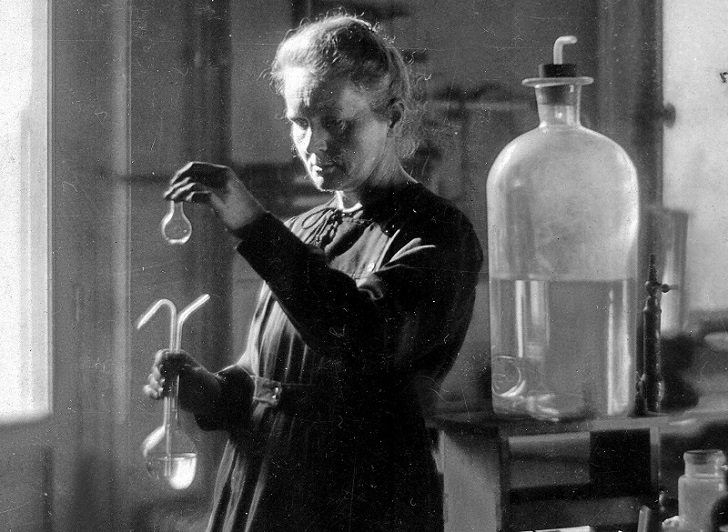
Exploring the Creative Side of Famous People

Have you ever wondered how geniuses such as Albert Einstein, Steve Jobs, and Marie Curie reached the highest success levels? Were they born with some extra intelligence, or was it something else? Recent research suggests that the secret behind the brilliance of these thinkers may have been their pastimes.
Hobbies can be crucial in unlocking certain parts of our creativity and helping us get closer to attaining greatness. Below are some hobbies pursued by many historical geniuses which could help you unlock your inner genius!

Grant Holt/ Wikkipedia | Together with her husband, Marie Curie was awarded half of the Nobel Prize for Physics in 1903,
Marie Curie and Her Love of Gardening
Marie Curie is renowned for her pioneering work in the field of science, particularly her groundbreaking research into radioactivity. Many people are not aware, however, of her love of gardening. It may seem like an unlikely passion for a brilliant physicist and chemist, but Curie took great pleasure in cultivating her garden.
She tended to various plants, including dahlias, anemones, and irises, and enjoyed the peacefulness and tranquility of being surrounded by nature. Some suggest that her love of gardening may have contributed to her success in science, as she experienced moments of inspiration and clarity while working outdoors. All in all, Curie’s dedication to both science and nature makes her a truly remarkable figure in history.

Getty Images/ Shutterstock | Steve Jobs wasn’t always a great success and had many failures throughout his life
Steve Jobs and His Enthusiasm for Calligraphy, Design, and Storytelling
Steve Jobs, the iconic co-founder of Apple, was a man of many passions. He was interested in creating groundbreaking technology and in the finer aspects of design, calligraphy, and storytelling. Jobs’ love for calligraphy was crucial in developing Macintosh’s typography. He believed that beautiful typefaces were essential to the success of the computer, which later became the industry standard.
Jobs’ design aesthetic was groundbreaking, and his focus on simplicity and elegance is still seen in Apple’s products today. Additionally, Jobs was a master storyteller, his famous “reality distortion field” was a product of his ability to inspire and motivate people. Jobs’ passion for these seemingly unrelated disciplines is a testament to his genius and belief that technology can also be beautiful.

BETTMANN / GETTY IMAGES | Bell started working on the harmonic telegraph in 1871
Alexander Graham Bell and His Interest in Speech Therapy and Teaching the Deaf
Alexander Graham Bell, known for his invention of the telephone, had a lesser-known interest in speech therapy and teaching the deaf. His mother and wife both suffered from hearing impairments, which sparked his curiosity and passion for finding ways to help those with hearing loss. Bell helped develop techniques for teaching lip-reading and speech to the deaf and even founded a school for the deaf in Boston.
His work in this field paved the way for advancements in hearing aids and speech therapy that still benefit those with hearing impairments today. Alexander Graham Bell’s legacy goes beyond the telephone and illustrates his dedication to improving the lives of others through innovation and education.
More in Leisure
-
`
Here’s Everything You Need to Know About Open Relationships
An open relationship is a consensual arrangement where partners agree to engage in romantic or sexual relationships with other people. Unlike...
June 6, 2024 -
`
Explore the Multifaceted Goals of Meditation
What is the goal of meditation? If you have ever found yourself asking this question, you are not alone. Meditation has...
May 31, 2024 -
`
When is National I Love You Day Celebrated? Mark Your Calendar
Life can get hectic, and sometimes amidst the daily grind, we forget to express our love and appreciation for the phenomenal...
May 23, 2024 -
`
When’s the Best Time of Day to Fish?
For any angler, a successful fishing trip hinges on several factors. But one of the most crucial elements is timing. Knowing...
May 14, 2024 -
`
What Mental Illness Does Britney Spears Have? Discovering the Answer
Britney Spears, a name that resonates with millions around the globe, goes far beyond the glitz and glamour of her stardom....
May 7, 2024 -
`
Here Are Some Easy Ways To Say No To Unrealistic Expectations In Your Relationship
If you are in a relationship, you should constantly work on improving it. Some early lovebirds fall in love too quickly...
May 3, 2024 -
`
Therapy? Medication? What Are the Treatments for PTSD
Post-Traumatic Stress Disorder (PTSD) is a common after-effect of traumatic events. It can be a debilitating condition, but the good news...
April 25, 2024 -
`
Courting vs Dating – Which Relationship Path is Right for You?
In today’s fast-paced world, the terms ‘courting’ and ‘dating’ often swirl around in conversations about relationships. While some people may use...
April 23, 2024 -
`
Essential Mexico Travel Tips for a Seamless Adventure
Mexico, a land of vibrant culture, breathtaking landscapes, and mouthwatering cuisine, beckons travelers from across the globe. But before you embark...
April 16, 2024















You must be logged in to post a comment Login